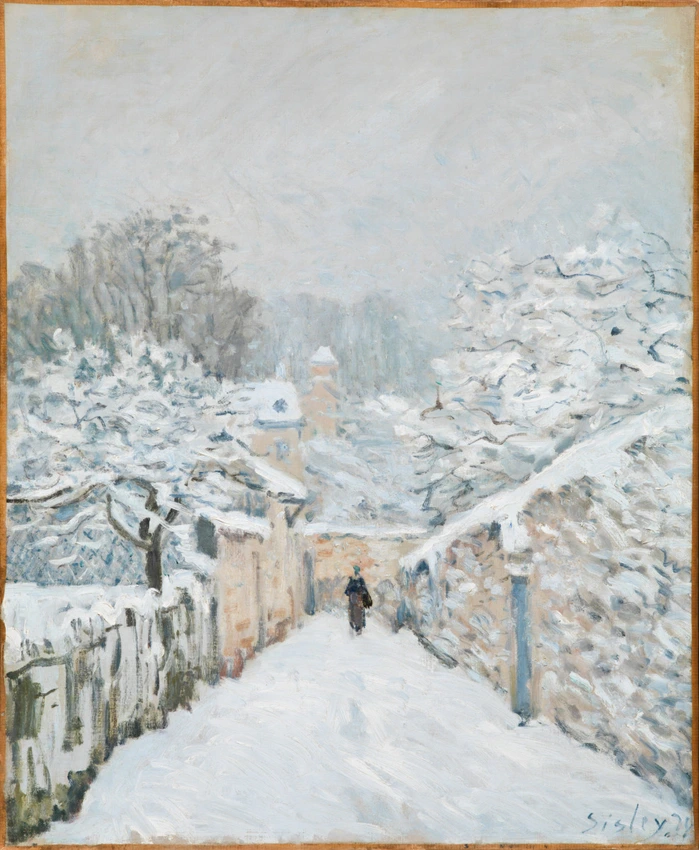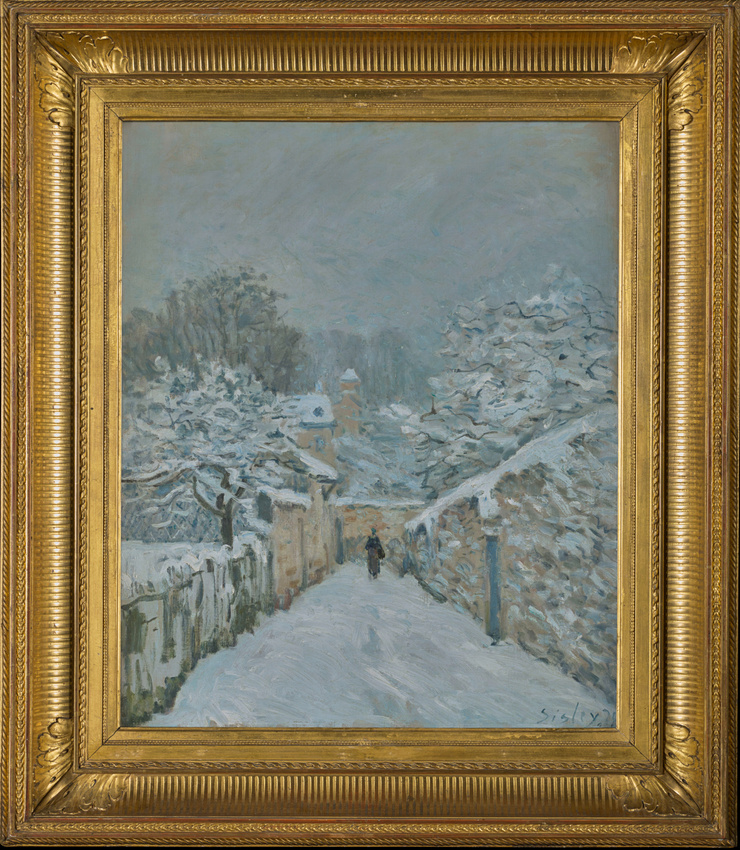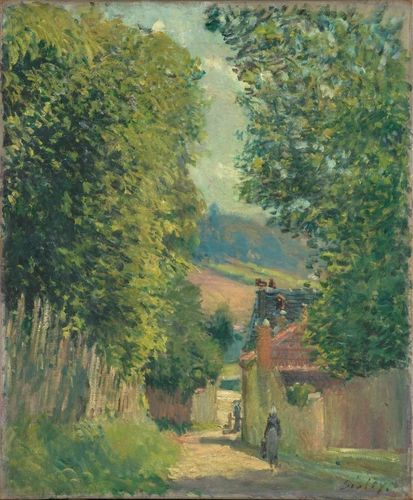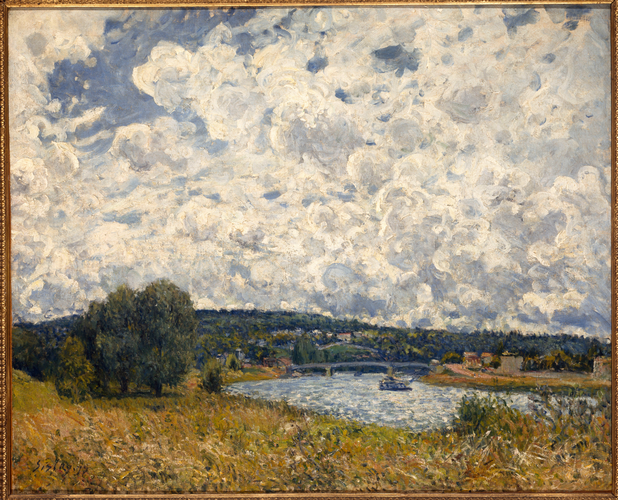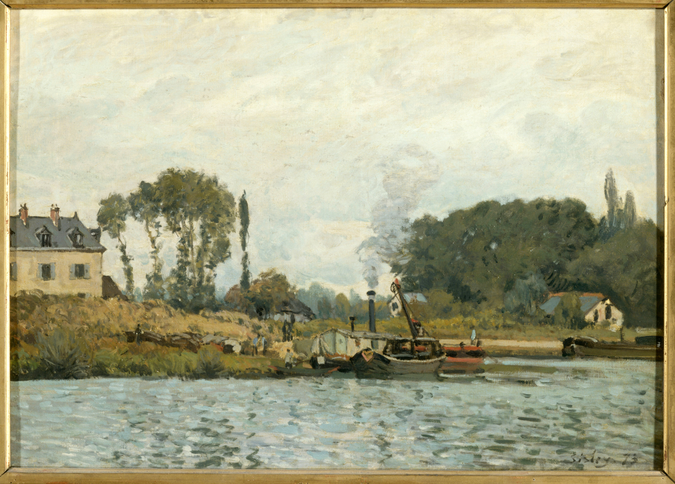-
Les Impressionnistes français
-
musée Cantini
-
France,
Marseille, 1955, n°44
-
Le paysage français de Poussin aux Impressionnistes
-
organisme inconnu
-
France,
inconnu, 1956, N° 26
-
De l'Impressionnisme à nos jours
-
musée des Beaux-Arts
-
France,
Limoges, 1956, n°30
-
De Renoir à Vuillard. Marly-le-Roi, Louveciennes, leurs environs
-
musée promenade de Marly-le-Roi-Louveciennes
-
France,
Marly-le-Roi, 1984
-
Orsay avant Orsay. 26 chefs-d'oeuvre impressionnistes et post-impressionnistes
-
musée Picasso
-
France,
Antibes, 1985
-
Orsay avant Orsay. 26 chefs-d'oeuvre impressionnistes et post-impressionnistes
-
musée des Augustins
-
France,
Toulouse, 1985
-
Orsay avant Orsay. 26 chefs-d'oeuvre impressionnistes et post-impressionnistes
-
musée des Beaux-Arts
-
France,
Lyon, 1985-1986
-
From Courbet to Cézanne, a new 19th century - Preview of the Musée d'Orsay, Paris
-
Brooklyn Museum
-
Etats-Unis,
New York, 1986
-
From Courbet to Cézanne, a new 19th century - Preview of the Musée d'Orsay, Paris
-
Dallas Museum of Art
-
Etats-Unis,
Dallas, 1986
-
L'Oeuvre et son double : Louveciennes de Sisley à nos jours
-
musée promenade de Marly-le-Roi-Louveciennes
-
France,
Marly-le-Roi, 1991, p.2
-
Sisley
-
Royal Academy of Arts
-
Royaume-Uni,
Londres, 1992, n°46
-
Sisley
-
musée d'Orsay
-
France,
Paris, 1992-1993, n°46
-
Sisley
-
The Walters Art Gallery
-
Etats-Unis,
Baltimore, 1993, n°46
-
Impressionists in winter. "Effets de neige"
-
The Phillips Collection
-
Etats-Unis,
Washington, 1998-1999, n°56
-
L'Impressionnisme et l'art moderne
-
palais de Toksu
-
Corée, République de,
Séoul, 2000-2001
-
Alfred Sisley, poète de l'impressionisme
-
musée des Beaux-Arts
-
France,
Lyon, 2002-2003
-
The Impressionists - Masterpieces from the Musée d'Orsay
-
National Gallery of Victoria
-
2004
-
Gli impressionisti e la neve. La Francia e l'Europa
-
Palazzina della Promotrice delle Belle Arti
-
Italie,
Turin, 2004-2005, n° 124
-
Christian Rohlfs. Die Begegnung mit der Moderne
-
Kunsthalle zu Kiel
-
Allemagne,
Kiel, 2005-2006, n° 14
-
Christian Rohlfs. Die Begegnung mit der Moderne
-
Brücke-Museum
-
Allemagne,
Berlin, 2006, n° 14
-
Impresionismo : Un Nuevo Renacimiento
-
Fundación Mapfre
-
Espagne,
Madrid, 2010
-
Impresionismo : Un Nuevo Renacimiento
-
Fine Arts Museums of San Francisco
-
Etats-Unis,
San Francisco, 2010
-
Birth of Impressionism. Masterpieces from the Musée d'Orsay
-
M. H. De Young Memorial Museum
-
Etats-Unis,
San Francisco, 2010
-
Birth of Impressionism. Masterpieces from the Musée d'Orsay
-
Frist Center for Visual Arts
-
Etats-Unis,
Nashville, 2010-2011
-
Exposition 1874 De Manet à l'impressionnisme : une renaissance moderne
-
Frist Center for Visual Arts
-
Etats-Unis,
Nashville, 2010-2011
-
La Rivoluzione dello sguardo. Capolavori impressionisti e post-impressionisti dal Musée d'Orsay
-
Museo d'Arte Moderna e Contemporanea di Trento e Rovereto
-
Italie,
Rovereto, 2011
-
Wintermärchen. Winter-Darstellungen in der europaïschen Kunst von Brueghel bis Beuys
-
Kunsthistorisches Museum
-
Autriche,
Vienne, 2011-2012, n° 153, p. 360 (reprod. coul. p. 361)
-
Wintermärchen. Winter-Darstellungen in der europaïschen Kunst von Brueghel bis Beuys
-
Kunsthaus Zürich
-
Suisse,
Zurich, 2012, n° 153, p. 360 (reprod. coul. p. 361)
-
Naissance de l'impressionnisme
-
National Art Center
-
Japon,
Tokyo, 2014
-
Colours of Impressionism: Masterpieces from the Musée d’Orsay
-
National Gallery Singapore
-
Singapour,
Singapour, 2017-2018
-
Colours of Impressionism: Masterpieces from the Musée d’Orsay
-
Art Gallery of South Australia
-
Australie,
Adelaïde, 2018
-
Les Couleurs de l'impressionnisme : chefs-d'œuvres des collections du musée d'Orsay
-
musée Mohammed VI d'art moderne et contemporain
-
Maroc,
Rabat, 2019
-
Colour & Light – The Legacy of Impressionism
-
Ateneum
-
Finlande,
Helsinki, 2023-2024
